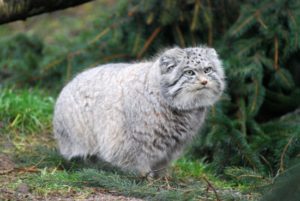25 interesting facts about manul
 The amazing steppe predators of the manula, strictly speaking, are not cats in the usual sense of the word. These interesting and curious animals belong to the feline family, but they are fairly different from all their biological relatives. In nature, they lead a rather isolated lifestyle, and only an inexperienced traveler can deceive their imaginary composure and relaxation. Manulas are ferocious predators, and they never let people get too close to them.
The amazing steppe predators of the manula, strictly speaking, are not cats in the usual sense of the word. These interesting and curious animals belong to the feline family, but they are fairly different from all their biological relatives. In nature, they lead a rather isolated lifestyle, and only an inexperienced traveler can deceive their imaginary composure and relaxation. Manulas are ferocious predators, and they never let people get too close to them.
Translated from the Greek, their name means “ugly ear.” Manula received such an incongruous name because of its ears of an unusual shape, unlike the cat’s.
The second official name of the manul is “Pallas the Cat”, in honor of the naturalist Peter Pallas, who first studied and described these predators back in the 18th century.
These animals have the thickest and densest fur among all felines on Earth. Even in snow leopards living in the mountains, fur cannot boast the same density.
In most cases, manuls prefer to avoid danger. But if they are driven into a corner, they fight like mad wolverines, that is, to the last.
In size the manul is comparable to an ordinary domestic cat. It weighs an average of 2 to 5 kilograms.
On one square centimeter of the body at the manul there are up to 9000 hairs.
Unlike ordinary cats, in bright light, the pupils of the manulas do not turn into vertical holes, but remain round like those of tigers.
Some scientists believe that Persian cats are close biological relatives of manuls. This theory has not yet found any confirmation or refutation.
These amazing predators can easily endure frosts up to -50 degrees.
In the wild, manuls are found mainly in Russia, China and Mongolia, as well as in the countries of Central Asia.
Because of the short and thick paws in combination with a heavy thick fur coat, the manul is not very mobile. He prefers to jump on ambush from a victim, but he does not know how to run very well.
In most cases, mice and other small rodents get to the manus for lunch, but sometimes these predators even hunt hares.
In captivity, they lose the will to live and practically do not multiply, falling into depression, from which only freedom can save them.
Since the maneuvers of long epochs developed very separately, the diseases with which the organism of an ordinary cat successfully copes are often fatal for them.
Manuli live one by one, meeting only in the mating season. On average, one individual lives on an area of 8-12 square kilometers.
From the weather and various dangers, they usually hide in the crevices of rocks and burrows of other animals left by their owners.
Kittens are brought in by the female only once a year.
In the afternoon they usually sleep off, and go hunting at night.
Unlike domestic cats, manuls do not know how to meow. But they can snort and growl.
In times of famine, they do not disdain even insects. But almost no plant food is eaten.
Manulas are silent animals. Even small kittens are always silent, so as not to attract unnecessary attention.
At one time, no more than 5 kittens are born to the female.
In nature, birds of prey, wolves, wild dogs and some other animals hunt manul.
The thick and weighty tail of the manul seems shorter than it is, because of the fluffy and long, up to 7 cm, wool. In fact, its length is usually about half the body length of this animal.
In the mountains, manuls occur at an altitude of up to 4.8 km above sea level, although their main population lives in steppes.



























